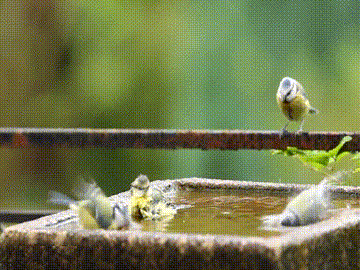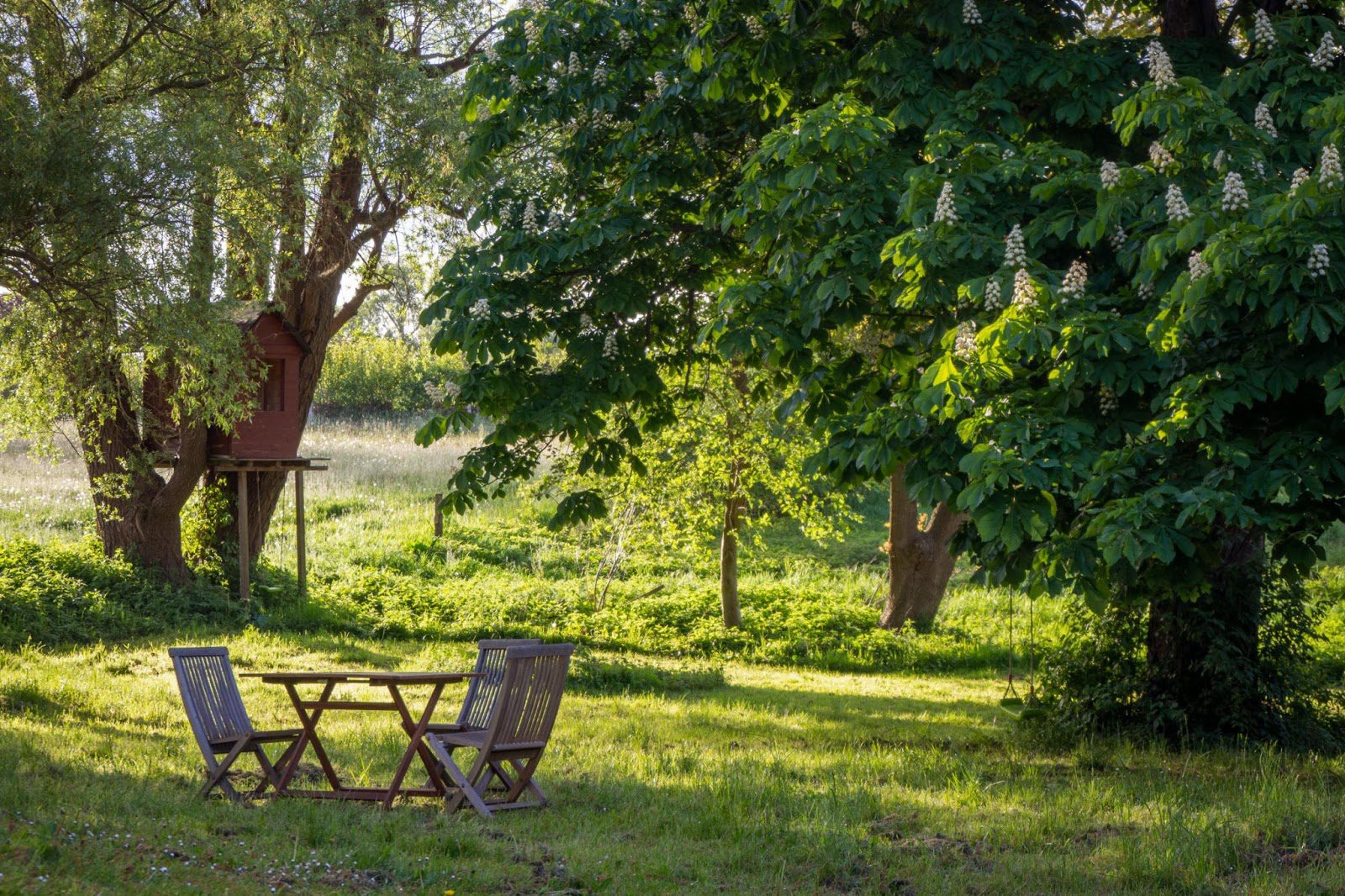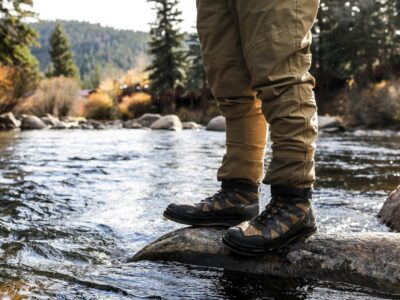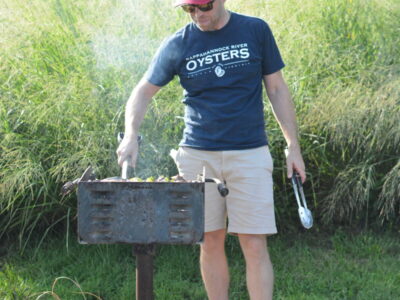It’s spring here in the midwest (finally!), which means I’m ready to move every single possible event outdoors to enjoy the sunshine and fresh air. Gratefully, God gave me at least one outdoorsy child who shares my enthusiasm for all things green and muddy. My little buddy is especially fond of frogs and toads.
We love the idea of inviting all the wild things into our backyard. There are loads of ways you can make your backyard a welcoming habitat for all God’s creatures, great and small, and, bonus(!) benefit your outdoor lives as well.
Plant Natives
Many of the species of landscape plants we’ve come to expect in our yards aren’t actually native to the region we live in. Because they aren’t native, they don’t support the local ecosystem to the degree that native species can. For example, according to Audobon, “research by the entomologist Doug Tallamy has shown that native oak trees support over 500 species of caterpillars whereas ginkgos, a commonly planted landscape tree from Asia, host only 5 species of caterpillars. When it takes over 6,000 caterpillars to raise one brood of chickadees, that is a significant difference.”
Native plants tend to be beautiful, healthy, and low maintenance additions to your yard. They require fewer pesticides and artificial fertilizers than manicured lawns, reducing the number of chemicals your pets and people in your household are exposed to and may also end up in the water table. Landscaping with natives also contributes to combating climate change, conserving water, and attracting the local wildlife we love to observe. Native vines, shrubs, perennials, and trees all help support your local bee, butterfly, hummingbird, moth, and bird populations, who in turn support the plants by pollinating them.
Everything is connected, and we can do our part as God’s children to nurture and sustain the circle of life.
The National Wildlife Federation offers this tool to help you find which plants are native to your area, sorted by those that are most likely to attract moths and butterflies. The National Audubon Society has its own tool that identifies specific plants that will help you attract native birds to your backyard. The Audubon site provides visuals to show which species of plants will attract which species of birds.
Feed the Birds (Tuppence a Bag)
I’ve not yet reached the degree of dedication exhibited by the Bird Woman on the steps of St. Paul’s Cathedral in Mary Poppins, but I do dream of making my backyard feel like a scene out of a Disney movie. Fewer pigeons and more songbirds, like those that greet Cinderella and Snow White.
Offering a bird feeder to attract more flying friends to your backyard will help birds make it through a particularly severe winter, give them shelter, contribute to ecological balance, help sustain bird population, and improve the chances of keeping a threatened species from going extinct.
For us humans, bird feeders draw a greater variety of birds for our viewing pleasure. Many birds eat insects we’d rather not have in our gardens and can serve as natural pest control. The worm-feeding birds will take care of soil aeration in your yard. I can attest to the mental health benefits of watching birds in our yard and hearing the variety of songs they offer. Both lower my levels of stress and bring me a sense of joy and calm I attempt to pass on to my children. Tending to a bird feeder reconnects us with nature.
If you’re thinking about adding a bird feeder to your backyard, there are some downsides to keep in mind. For starters, if you have an outdoor cat, you might want to reconsider a bird feeder altogether.

Because they are wild animals, our interactions with birds can disrupt their natural instincts. If we’re too good at feeding the birds, they may become reliant on us for their food and lose their ability to take care of themselves. This is actually good news for me, because I often feel guilty when I let my feeder go empty for a while. See, I’m just teaching them how to be self-sufficient, like a proper bird parent!
Place your feeder far enough away from the house to discourage bird death-by-window strikes. Choose feeds that are safe and natural for birds, especially feeds that favor native species—some feed blends are more attractive to invasive species and can do more harm than good to our native birds. Do some research and talk to a local nursery or feed store for advice on which species of birds are native and what types of seed are appropriate to nurture them.
House the Birds
If you’re looking to attract specific species of birds to your backyard, you can do so by adding specific types of houses designed to attract (and protect) different species. Bluebirds, wrens, purple martins, ducks, owls, and chickadees each require their own style of birdhouse. Home Stratosphere provides a thorough list of 25 different types of birdhouses, materials, mounts, and designs that can help you decide which birdhouse is best suited for your backyard.
Invite in Nature’s Pest Control
Birds aren’t the only ones who can help manage the insect population in your yard. Did you know that the average small bat catches 1,000 or more small insects an hour? They also are great pollinators and seed dispersers. You can foster your local bat population by installing a bat house on the south- or east-facing side of a building or on a stand-alone pole. Likewise, cultivating frog-and-toad friendly spaces will also safely and naturally reduce your pest population in your garden and yard. A single frog can eat over 100 insects a night. A water source is the primary attraction for frogs and toads. Eliminating unnatural pesticides and providing shady shelters with flower pots or rocks can help keep these amphibians as your local pest control. Grow a Good Life provides more information on attracting frogs and toads to your garden.
Provide Water for Local Wildlife
If you don’t feel like feeding and housing the birds is quite enough, you might also consider incorporating a birdbath into your backyard. What’s even cuter than watching birds eat? Watching birds take a bath:

I love the idea of a birdbath because, LOOK HOW CUTE! But honestly, all we really added to our backyard was a stagnant puddle of algae water for mosquitoes to breed in. Ew. If you’re better at birdbath maintenance and cleaning, they sure can be fun! Just watch the water depth so the little birdies can safely splash and wade. SO CUTE!
All creatures require water though, so even a bowlful of fresh water replaced every few days can help attract and care for the wildlife in your vicinity.
How have you invited nature into your backyard? Take a picture of what’s going wild and share it with the R&V community on Instagram! It’s these small efforts that make a world of difference for the creation God has given us.




 Copyright
2024
Root and Vine
Copyright
2024
Root and Vine